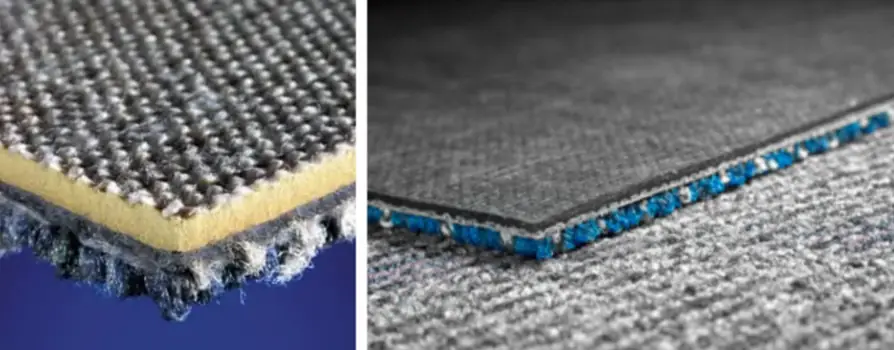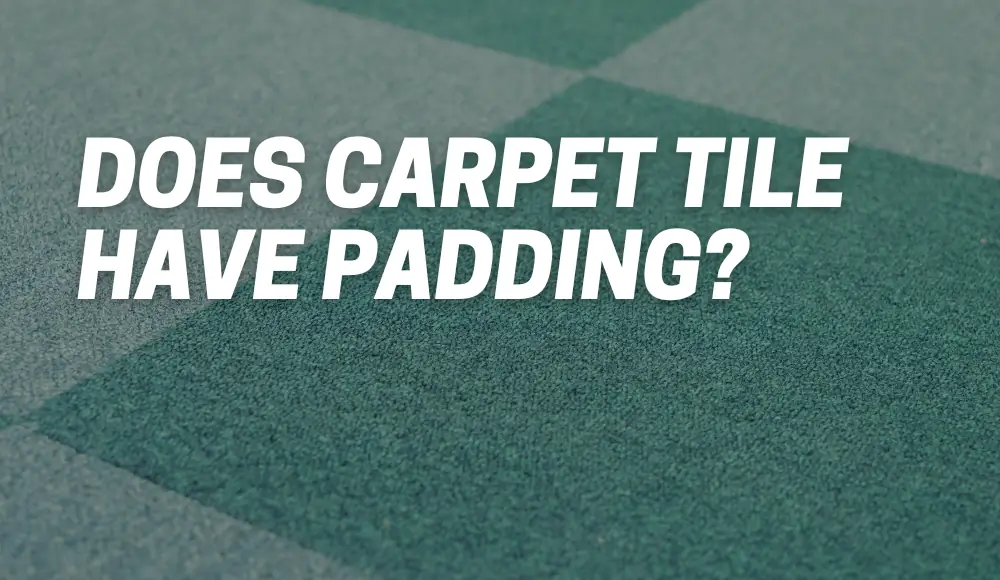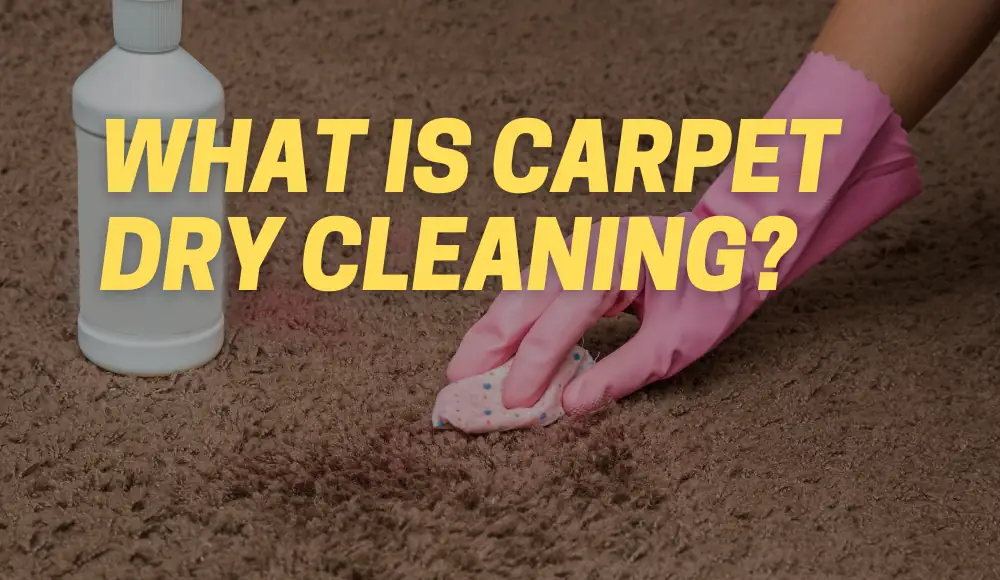Last updated on October 29th, 2023 at 03:03 am
If you’re considering carpet tile for your flooring needs, you might be wondering about a crucial aspect: padding. Carpet tile padding, or underlay, plays a significant role in the overall comfort, durability, and insulation of your carpet tiles.
In this guide, we’ll delve into the world of carpet tile padding, answer your burning questions, and provide insights to help you make an informed decision.
What is the Backing of Carpet Tile?
Before we dive into the realm of padding, let’s talk about the backing of carpet tiles.
The backing is the layer beneath the surface that gives the tile its structure and stability. It’s like the backbone of your carpet tile. The backing can vary in materials, with options including vinyl, urethane, PVC, and bitumen.
Different backings offer different advantages, like moisture resistance, dimensional stability, and ease of installation.

Do Carpet Tiles Provide Insulation?
Absolutely! Carpet tiles do provide insulation, and this is where the role of padding comes into play. The insulation properties of carpet tiles help maintain a comfortable indoor temperature by preventing heat loss and noise transmission. This can be particularly beneficial in commercial spaces where noise reduction and temperature control are essential.
Is There an Underlay for Carpet Tiles?
Yes, there is an underlay for carpet tiles, and it’s often referred to as carpet tile padding or cushion. This underlay is designed to enhance the performance of your carpet tiles by adding an extra layer of comfort and protection.
Think of it as a cozy blanket for your flooring. Carpet tile padding comes in various materials, such as foam, rubber, or felt. It helps absorb impact, reduce noise, and extend the lifespan of your carpet tiles. Carpet tiles inherently feature an integrated underlay, negating the need for an extra underlay in typical scenarios.
What Goes Under Carpet Tiles?
Underneath your carpet tiles, you’ll usually find the subfloor. The subfloor is the existing floor surface that supports your carpet tiles. Depending on the type of subfloor you have, you might need additional preparation before installing carpet tiles.
For instance, if you’re installing carpet tiles on concrete, you might require moisture barriers or special adhesives to ensure a smooth and durable installation.
Do You Need a Moisture Barrier Under Carpet Tiles?
When installing carpet tiles, especially in areas prone to moisture or humidity, a moisture barrier can be a wise addition.
Moisture barriers are designed to prevent moisture from seeping through the subfloor and damaging your carpet tiles. This is particularly crucial when installing carpet tiles over concrete or in basements where moisture-related issues can arise. Remember, a little extra protection can go a long way in preserving the longevity of your flooring.
Do You Put Underlay for Carpet Tiles on Concrete?
Yes, using underlay for carpet tiles on concrete is a recommended practice. Concrete subfloors can be hard and unforgiving, and adding an underlay provides cushioning and insulation. It also helps address potential unevenness in the subfloor, ensuring a smoother surface for your carpet tile installation.
With the right underlay, you can enhance the comfort and performance of your carpet tiles, even on a concrete base.
What is the Best Base for Carpet Tiles?
The best base for carpet tiles depends on your specific needs and the area where you’re installing them.
If you’re seeking optimal comfort and insulation, using a quality underlay on a smooth and clean subfloor is recommended. However, if you’re installing carpet tiles in high-traffic commercial spaces, you might need a more rigid and stable base to withstand heavy foot traffic.
Always consider the function of the space and your desired level of comfort when selecting the base for your carpet tiles.
How to Install Carpet Tiles
—
A Quick Guide to Carpet Tile Padding – Top Tips
Here’s a quick list of key takeaways to remember when it comes to carpet tile padding:
- Enhanced Comfort: Carpet tile padding adds an extra layer of cushioning, making your flooring more comfortable to walk on.
- Insulation: The right padding enhances insulation properties, keeping your space cozy and energy-efficient.
- Noise Reduction: Carpet tile padding helps absorb sound, reducing noise transmission between floors.
- Durability: Padding can extend the lifespan of your carpet tiles by reducing wear and tear caused by foot traffic.
- Subfloor Preparation: Depending on your subfloor type, you might need additional preparation like moisture barriers or leveling compounds.
- Concrete Considerations: When installing on concrete, choose an underlay that addresses both cushioning and moisture protection.
- Commercial Spaces: In high-traffic areas, opt for a more resilient base to ensure your carpet tiles can withstand the daily hustle and bustle.
Conclusion
When it comes to carpet tile padding, the choice is yours. Adding padding to your carpet tile installation can greatly enhance the overall comfort, insulation, and durability of your flooring.
Whether you’re aiming for a cozy residential space or a bustling commercial area, the right padding can make a world of difference. So, don’t hesitate to explore your options and create a comfortable foundation for your stylish carpet tiles.


